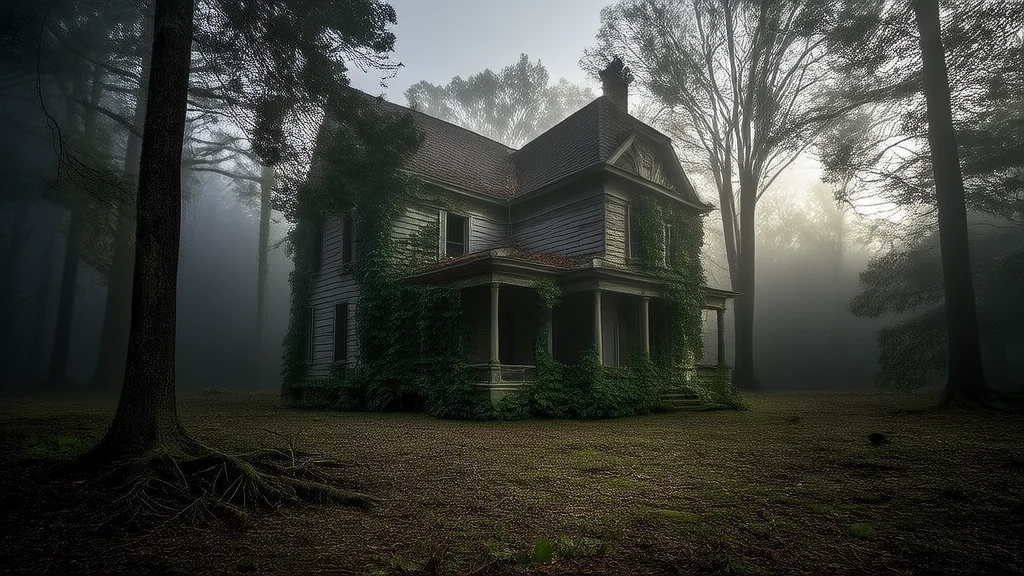🔮 Weird Tales & Urban Legends
The Whispering Shadows of the Hollow House and the Girl Who Never Returned

The old building stood at the edge of town, its windows dark and eyes hollow. No one knew when it was built, only that it had been there long before the first road was paved. Locals called it "The Hollow House," a name that hung in the air like a whisper. It wasn't abandoned, not exactly. Sometimes, people would see shadows moving behind the curtains, or hear faint voices echoing from within. But no one dared to go near it.
One autumn evening, a young woman named Elara wandered past the house on her way home from work. She had heard the stories, of course—how the previous owner had vanished without a trace, how children who entered the building never returned. But she was skeptical. She had always believed that fear was just another kind of superstition.
Curiosity got the better of her. She stopped at the gate, which creaked as if protesting her presence. The iron bars were rusted, the paint peeling in places. A sign above the door read "No Trespassing" in faded letters. Elara hesitated, then pushed the gate open. The hinges groaned like a dying man.
Inside, the air was thick with dust and silence. The floorboards creaked beneath her feet, each step echoing as if the house itself was listening. She moved slowly, her breath shallow. The walls were lined with portraits, their faces blurred or missing. Some had been torn from their frames, leaving jagged edges. In the hallway, a single chandelier swayed slightly, though there was no wind.
She found a staircase leading down, its steps worn and uneven. At the bottom, a door stood ajar. She stepped inside and found a small room filled with books, their spines cracked and brittle. On the desk sat a journal, its pages yellowed with age. She opened it and began to read.
The entries were written in a hurried hand, detailing strange occurrences: whispers in the night, doors opening on their own, and a feeling of being watched. The writer spoke of a "presence" that lingered in the house, something that didn’t belong to the world of the living. The final entry was dated two years ago, and ended abruptly: "It's getting closer. I can feel it."
Elara closed the journal and stepped back. Something in the room shifted, but when she turned, nothing was there. She felt a chill crawl up her spine, but she forced herself to stay calm. As she made her way back up, the house seemed different—darker, more alive. The shadows stretched longer, and the silence was heavier.
When she finally emerged into the cold night air, she looked back at the house. Its windows glowed faintly, as if lit from within. She didn’t know why, but she had the sudden urge to run. She did, not stopping until she reached her car.
The next day, Elara told no one about what she had seen. But that night, she dreamed of the house again. This time, she was inside, standing in the same room with the journal. The door slammed shut behind her, and the lights flickered. She turned and saw a figure in the corner, watching her. It was not human. It had no face, only a shape that pulsed like smoke.
She woke up screaming, drenched in sweat. The next morning, she tried to forget it, but the images stayed with her. She avoided the area, but the house was always there, waiting. One evening, she found herself walking toward it again, drawn by an invisible force.
This time, she didn’t stop. She opened the gate, walked through the front door, and went straight to the room with the journal. When she arrived, the door was already open. The journal lay on the desk, untouched. She picked it up and read the last entry again. Then, she noticed something new—a name, written in the margin. Her own name.
As she looked up, the room grew darker. The figure was there now, standing in the doorway. It didn’t move, didn’t speak. It just watched. And for the first time, Elara understood: the house wasn’t haunted by ghosts. It was waiting for someone to come back.
Published on en
🔗
Related Sites
- AI Blog — AI trends and tech news